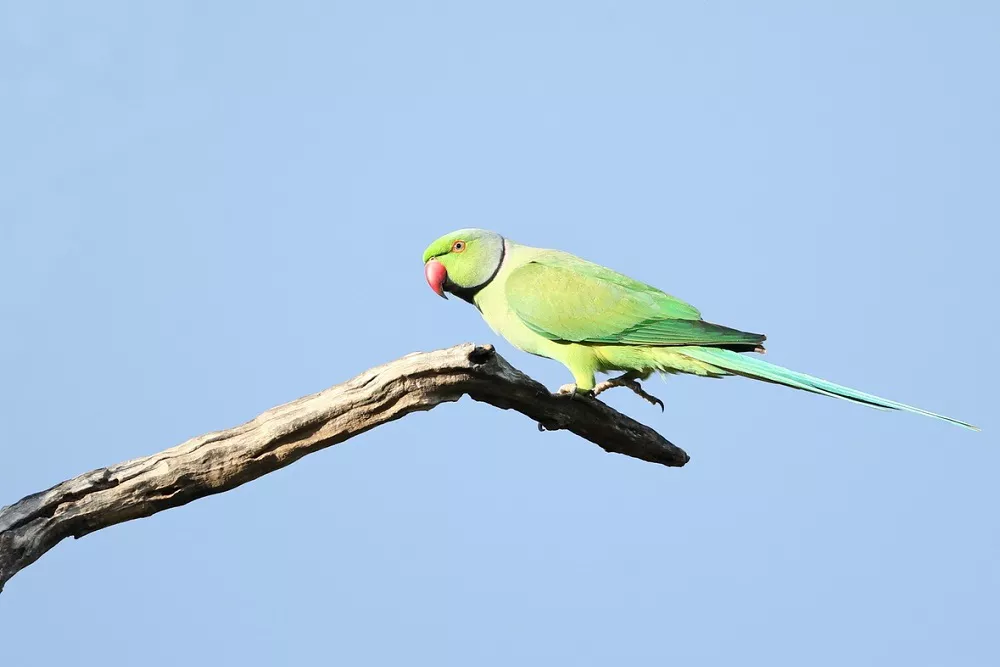Indian Ringneck parrots, scientifically known as Psittacula krameri manillensis, are popular aviary birds cherished for their vibrant colors, intelligence, and playful nature. If you’re a parrot enthusiast or considering owning an Indian Ringneck, it’s essential to know how to determine their gender accurately. While it can be challenging to determine the sex of these birds without genetic testing, several physical and behavioral traits can provide valuable clues. In this article, we will explore the various methods and characteristics that can help you identify male and female Indian Ringneck parrots.
1. Physical Differences: Size and Body Shape
One of the primary indicators of sex in Indian Ringneck parrots is their size and body shape. In general, males tend to be slightly larger than females, both in length and overall bulk. Males typically measure around 16 to 18 inches (40-45 cm) from head to tail, while females usually range between 14 and 16 inches (35-40 cm). Additionally, males may have a more substantial and broader head compared to females.
2. Plumage Differences
The plumage of Indian Ringneck parrots can vary depending on their age and color mutations. However, certain characteristics can assist in distinguishing between males and females:
Adult Males: Typically, adult male Indian Ringnecks display vibrant plumage with bright green feathers dominating their bodies. They often have a distinctive black or dark-colored ring around their necks, which is absent in females. The males’ wings may also exhibit hints of blue, particularly on the outer flight feathers. Their tails feature long, pointed feathers, and the lower back region may have a bluish tinge.
Adult Females: Adult female Indian Ringnecks usually have duller colors compared to males. Their plumage tends to be a mix of green and gray with less intense shades. While they lack the prominent neck ring found in males, some females may have a faint or partial ring. The tail feathers of females are generally shorter and rounded, lacking the elongated points seen in males.
3. Eye Color
Another characteristic that can help differentiate between male and female Indian Ringnecks is their eye color. In most cases, adult males have a dark, almost black, iris, while adult females typically display lighter-colored irises, often closer to a reddish-orange or light yellow hue. However, it’s important to note that eye color alone is not a definitive method for gender determination and should be considered alongside other traits.
4. Behavioral Differences
While physical characteristics provide useful clues, observing the behavior of Indian Ringneck parrots can also contribute to determining their sex:
Courtship Displays: Males are known for their elaborate courtship displays when trying to attract a mate. They may bob their heads, extend their wings, puff up their feathers, and perform various acrobatic movements. These behaviors are less frequently observed in females.
Vocalizations: Male and female Indian Ringnecks have similar vocal abilities and can mimic various sounds. However, males tend to be more vocally active and may produce louder, attention-seeking calls during courtship or territorial disputes.
Bonding Behavior: In captivity, Indian Ringnecks often form strong bonds with their human caretakers. Male birds are often more inclined to bond closely with humans, displaying affectionate behaviors such as regurgitating food, preening, and seeking physical contact.
5. DNA Testing
If you require precise confirmation of your Indian Ringneck’s gender, DNA testing is the most accurate method. By collecting a simple blood sample or using a non-invasive feather or saliva test, specialized avian DNA laboratories can determine the sex of your bird with 99% accuracy. This method is particularly useful for breeders or individuals seeking absolute certainty in their bird’s gender.
Conclusion
Identifying the gender of Indian Ringneck parrots can be challenging, especially without DNA testing. However, by carefully observing physical characteristics such as size, plumage, and eye color, along with noting behavioral tendencies, you can make an educated estimation of your bird’s sex. Remember that individual variations and color mutations can sometimes complicate the identification process. If you require complete certainty, DNA testing is a reliable option. Understanding the sex of your Indian Ringneck parrot not only enhances your knowledge but also helps create a suitable environment for their specific needs, ensuring a happy and healthy companion for years to come.


 Facebook
Facebook  Instagram
Instagram  Youtube
Youtube 